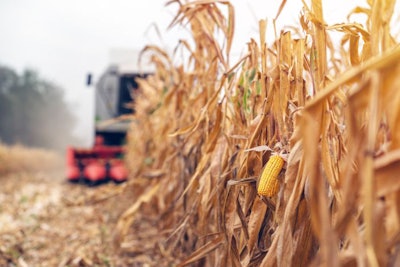
Corn and soybean yield estimates reduced in newest WASDE report
The U.S. Department of Agriculture (USDA) surprised the industry this week when it reduced its corn and soybean yield estimates in the November World Agricultural Supply and Demand Estimates (WASDE) report.
For the U.S. corn yield, the USDA reduced its estimate to 175.8 bushels per acre, increased the export estimate by 325 million bushels and reduced the feed usage estimate by 75 million bushels, resulting in a projected corn carryover into the 2021 crop year that’s down by 465 million bushels compared with the estimate from a month ago.
The revised corn yield estimate “was a surprisingly large reduction,” of 2.6 bushels per acre, according to Jim Mintert, professor and director of the Center for Commercial Agriculture at Purdue University, who spoke during a webinar on November 11.
“The trade was largely expecting at least somewhat of a yield reduction coming into this report, but it was a larger yield reduction than virtually anybody was expecting,” he said. “It’s been a dramatic change in a short span of time and very surprising, particularly given the fact that, although we have had some weather impacts … the bigger factor here is what’s taken place on the demand side.”
The yield reduction is a reflection of the late-season weather that occurred across the Corn Belt, but total corn production, while smaller than expected, is still a large number.
“Even though it’s smaller – and this crop has been shrinking now – by historical standards, this is still a large corn crop,” Mintert said. “This is not a short crop year like, for example, a drought year like 2012.”
The market’s surprise over the report was seen in the corn futures markets, said Nathan Thompson, assistant professor in the department of agricultural economics at Purdue University.
“The USDA number came in below any of the trade expectations in terms of what that total production is and then we saw the impact of that in what we saw in the futures yesterday,” he said.
Soybean projected carryover also lowered
For the U.S. soybean crop, the USDA reduced the yield estimate by 1.2 bushels per acre to 50.7 bushels per acre, but there was no change in the soybean export or crush forecast.
“That’s a lower yield than we were expecting a month or two ago, but nevertheless it’s not a true drought scenario, it’s not a true short crop scenario … it’s the third highest yield on record,” Mintert said.
However, the smaller production number tightens the projected carryover, he said.
“We’re looking at several months in a row now of tightening those carryover estimates,” he added. “If you look at the current estimate at 190 million bushels, that’s down almost 70% since August. … I don’t recall a year when we’ve seen that dramatic of a change in the projected carryover when it wasn’t a major drought year, so that’s really surprising.”










